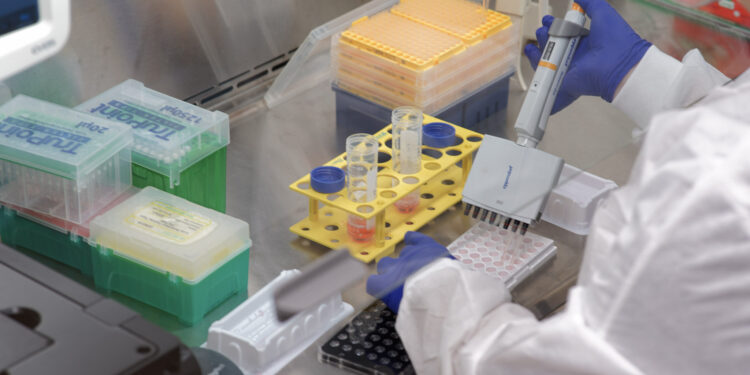Helen Cristina Miranda. Credit: Case Western Reserve University
Amyotrophic lateral sclerosis (SLA), known as Lou Gehrig’s disease, is an incurable neurological disorder affecting motor neurons – nervs in the brain and spinal cord which control the movement and breathing of voluntary muscles.
Many clinical trials of ALS, including those that test promising medications, are below expectations – often because the extent of the disease may vary and patients do not meet medicines in the same way.
But a new study led by scientists from the Western Reserve University box used stem cells created from SLA patients to target a specific gene as a kind of stop valve for what stressed the nerve cells – and that worked.
Although research involved a very rare type of SLA, the research team was optimistic, the positive results could provide clues to more widely treat devastating disorder.
“This work could help launch the basics of genetically informed clinical trials,” said principal researcher Helen Cristina Miranda, associate professor of genetics and genome sciences at the Western Reserve’s School of Medicine case.
Regenerative medicine – generating healthy cells to replace cells and repair tissues damaged by the disease – is a particular force in the Western case reserve. Miranda’s laboratory studies neurodegenerative diseases – including ALS – using human stem cells.
The study is published in the journal Molecular medicine.
The researchers studied a heredit type of SLA caused by a mutation in a gene (membrane protein associated with vesicles B, or VAPB). The VAPB gene provides instructions to make a protein that helps connect different parts of the cell so that they can communicate and respond to stress.
“This is particularly important in nerve cells,” said Miranda. “When they break down, neurons are no longer vulnerable to degeneration.”
IPSC, or induced pluripotent stem cells, are special cells created in the laboratory from the skin or blood of a person that can be transformed into almost any type of cell in the body. In this study, they used IPSC patients with SLA to develop their motorcycleurons in a dish, allowing them to study the disease using real human cells.
They discovered how a mutation in the VAPB gene can disrupt communication between the key parts of the cell, in particular between the endoplasmic reticulum (ER) and the mitochondria. The ER is like the quality control center of the cell. It helps produce and fold the proteins and ensures that everything inside the cell takes place gently, especially when the cell is stress. The mitochondria are the power plants of the cell. They generate the energy that cells – especially nerve cells – should not remain alive and do their job.
This disturbance leads to the chronic activation of a protection mechanism called response to integrated stress (ISR). Although initially useful, the sustained activation of the ISR reduces protein production and alters cell survival, ultimately damaging the snowmobiler and contributing to this rare hereditary form of the ALS.
They also identified the ISR as a potential therapeutic target.
“We have also shown that blocking this response to stress can reverse the damage in the laboratory, a promising step towards future treatments,” she said. “This is proof of promising concept for future therapeutic strategies.”
Several drugs approved for ALS by Food and Drug Administration of the United States can extend survival, slow down the decline or help manage symptoms. But there is no known treatment that stops or reverse the progression of the disorder.
As explained, the study of the team focused on a particularly rare type of SLA. But hope is to broaden the research now to test if the objective could work on other forms of disorder.
“It is very rare, more widespread in Brazil, but studying it gives us a window on how the motor neurons react to stress,” said Miranda.
“We are now testing ISR inhibitors in more complex neuromuscular models and exploring how this approach could benefit other SLA subtypes.”
More information:
Converging activation of the integrated response of stress and decoupling ER – Metochondrie in the SLA associated with VAPB, Molecular medicine (2025). DOI: 10.1038 / S44321-025-00279-3
Supplied by Western Reserve University case
Quote: Stem cells created from SLA patients point to a new potential target for treatment (2025, August 5) recovered on August 5, 2025 from
This document is subject to copyright. In addition to any fair program for private or research purposes, no part can be reproduced without written authorization. The content is provided only for information purposes.



